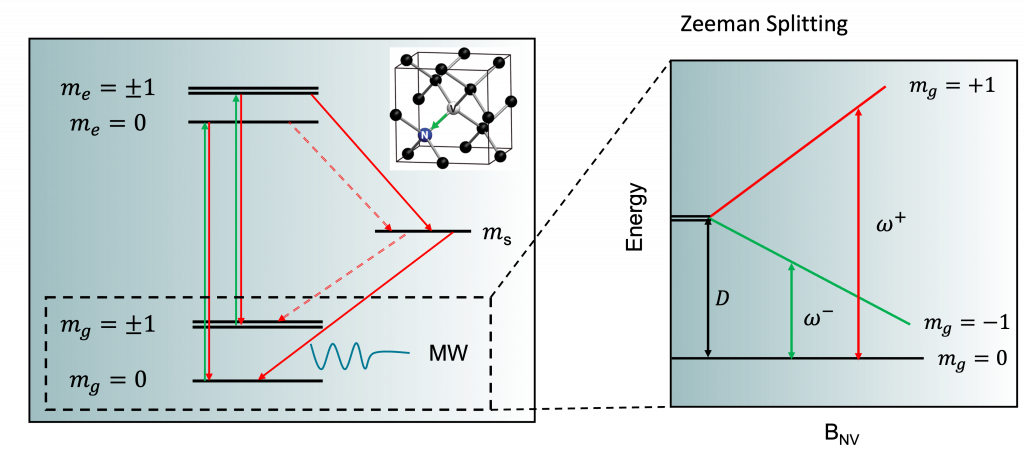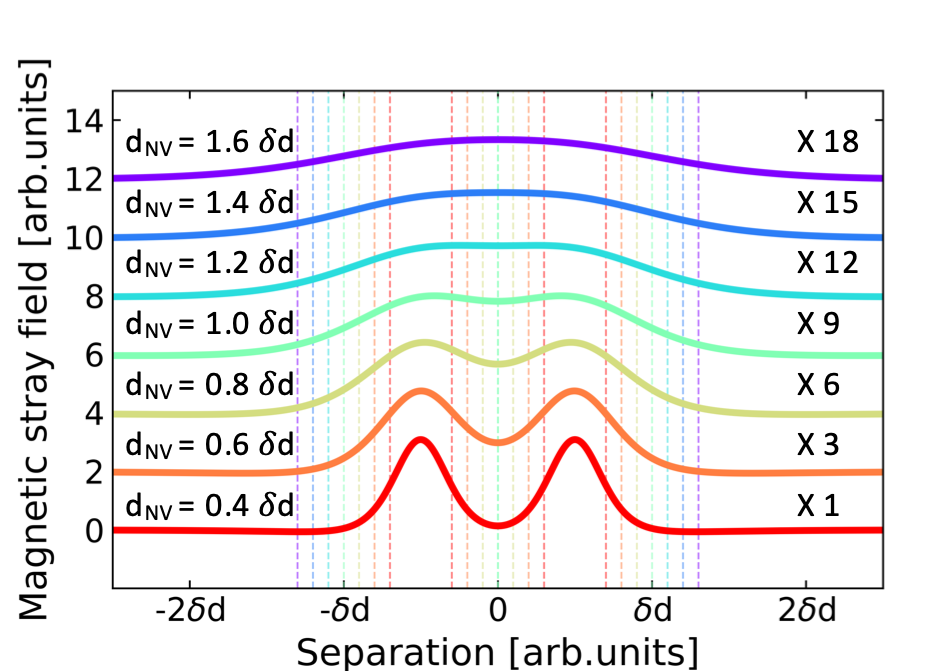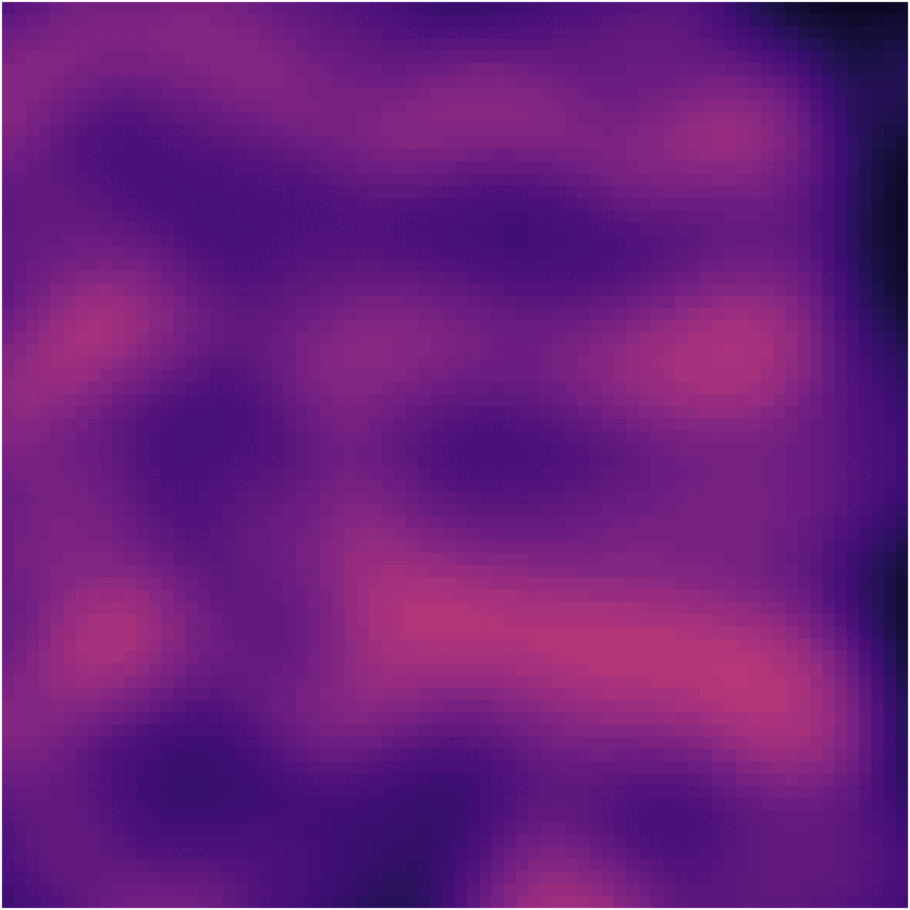In recent years, the field of quantum sensing[1] has witnessed a revolutionary advancement with the emergence of nitrogen vacancy (NV)[2] centers as versatile and highly sensitive quantum probes. NV centers, found in diamond crystals, exhibit unique quantum properties that make them ideal candidates for a wide range of sensing applications.
The NV center consists of a nitrogen atom adjacent to a vacancy in the diamond lattice, along with two neighboring carbon atoms. It can be interrogated using optical techniques. When illuminated with green light, NV centers absorb photons and enter an excited state. Subsequently, they relax back to their ground state, emitting red fluorescence (c.f., Figure 1, box 1). The intensity and polarization of this fluorescence depend on the spin state of the NV center, which can be manipulated and read out using microwave and optical techniques. By precisely measuring changes in fluorescence, NV centers can be employed to sense and characterize various physical phenomena. On the other hand, as a single Q-bit, the electronic ground state of the NV center consists of a triplet spin configuration, i.e., m_s = 0, ±1. When no external magnetic field is applied, |-1> and |+1> energy levels are degenerated. However, when an external magnetic field is introduced, the energy levels experience a Zeeman splitting due to the interaction between the electron’s magnetic moment and the magnetic field. According to the Zeeman effect, the energy levels shift in energy, with the amount of splitting depending on the strength and direction of the magnetic field (c.f. Figure 1, box 2). By precisely measuring the energy splitting and phase differences between spin states, NV centers can be employed as ultra-sensitive sensors in diverse fields such as magnetometry, bio-imaging, quantum information processing.

Although NV center offers unparalleled sensitivity in real space imaging, one of its limitations is the requirement for close proximity to the sample surface. This constraint poses challenges for imaging finer structures that require a lower stand-off distance. The spatial resolution of Scanning NV magnetometry (SNVM) depends on the sensor-to-sample distance dNV , as opposed to optical microscopy, whose resolvability is constrained by the diffraction limit, and other quantum sensing technique such as scanning superconducting quantum interference devices microscopy (or scanning SQUID microscopy) , whose resolvability is limited by the sensor size. Figure 2 shows the change of the z-component of magnetic stray field originating from two dipoles[3] separated by distance δd measured by NV at different dNV .

It is evident that the peaks from two separated magnetic dipoles can be well resolved at small sensor-sample separation (dNV in the range of 0.4 to 0.8 of the dipoles separation δd). When dNV approximates δd, the distance between the two peaks equals the full width at half maximum (FWHM) of the stray field distribution curves. It makes distinguishing between two individual dipoles difficult. Beyond this point, the two magnetic dipoles can not be resolvable any longer. Analogous to the Rayleigh criterion, the spatial resolution in SNVM is defined as the smallest distance between NV and sources to be resolved.

Figure 3 illustrates the improved spatial resolution of SNVM through imaging the widely studied room temperature multiferroic material bismuth ferrite (BiFeO3)[4-6], known for its non-collinear antiferromagnetic spin cycloid that has garnered significant research interest in recent years. By shifting the NV center 21 nm closer to the surface of the BiFeO3 sample, the intricate ‘zig-zag’ pattern of the spin cycloid becomes clearly discernible.
In conclusion, the improved spatial resolution of scanning NV magnetometry represents a significant technological advancement with far-reaching implications across scientific disciplines. Through innovative techniques and methodologies, we have pushed the boundaries of spatial resolution, enabling nanoscale imaging of magnetic fields with unparalleled precision. As this field continues to evolve, scanning NV magnetometry promises to revolutionize our understanding of magnetism, quantum phenomena, and biological systems, paving the way for transformative discoveries and technological innovations.
[1] Degen, Christian L., Friedemann Reinhard, and Paola Cappellaro. “Quantum sensing.” Reviews of modern physics89.3 (2017): 035002.
[2] Degen, Christian L. “Scanning magnetic field microscope with a diamond single-spin sensor.” Applied Physics Letters 92.24 (2008).
[3] Lima, Eduardo A., and Benjamin P. Weiss. “Obtaining vector magnetic field maps from single‐component measurements of geological samples.” Journal of Geophysical Research: Solid Earth 114.B6 (2009).
[4] Gross, Isabell, et al. “Real-space imaging of non-collinear antiferromagnetic order with a single-spin magnetometer.” Nature 549.7671 (2017): 252-256.
[5] Haykal, A., et al. “Antiferromagnetic textures in BiFeO3 controlled by strain and electric field.” Nature communications11.1 (2020): 1704.
[6] Chauleau, J-Y., et al. “Electric and antiferromagnetic chiral textures at multiferroic domain walls.” Nature materials 19.4 (2020): 386-390.

